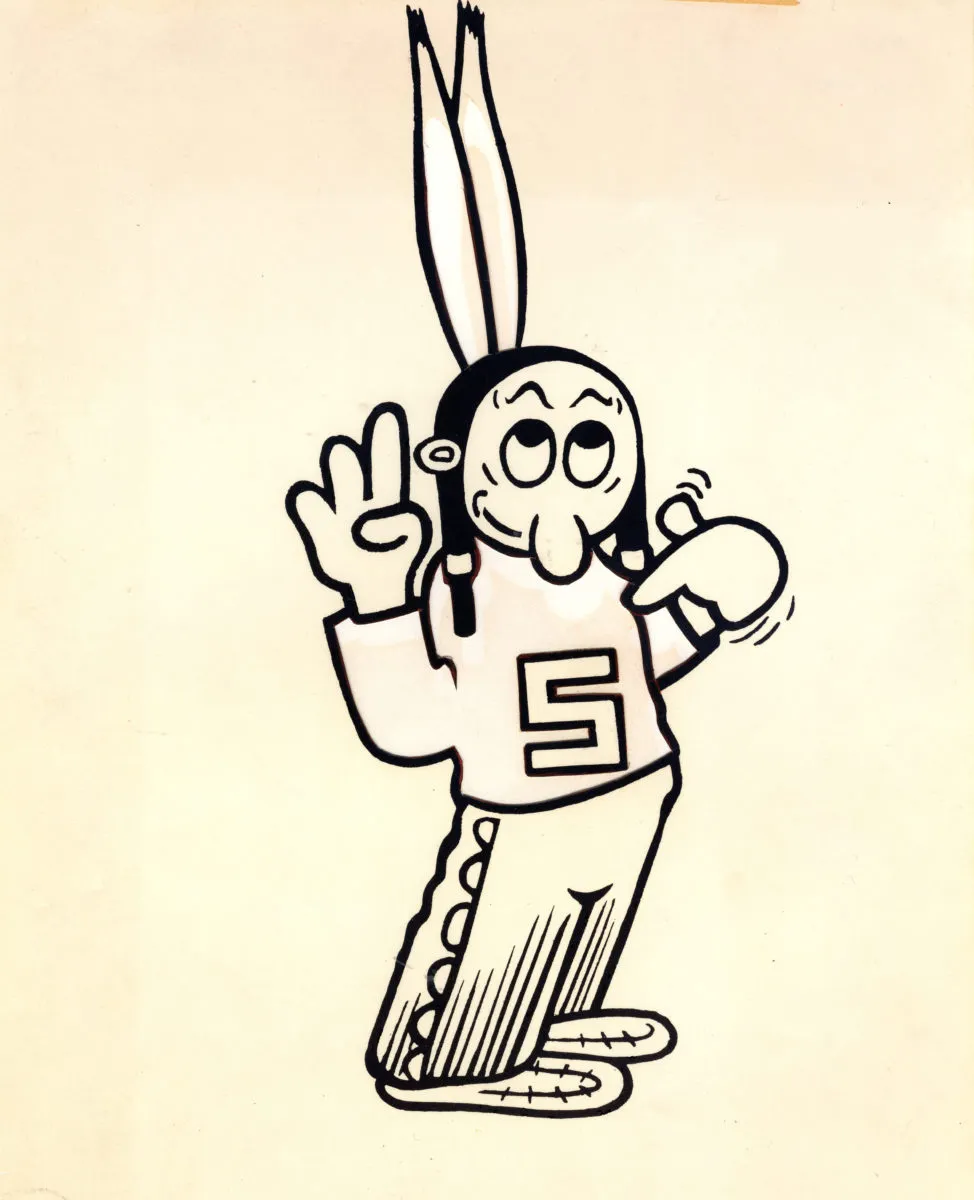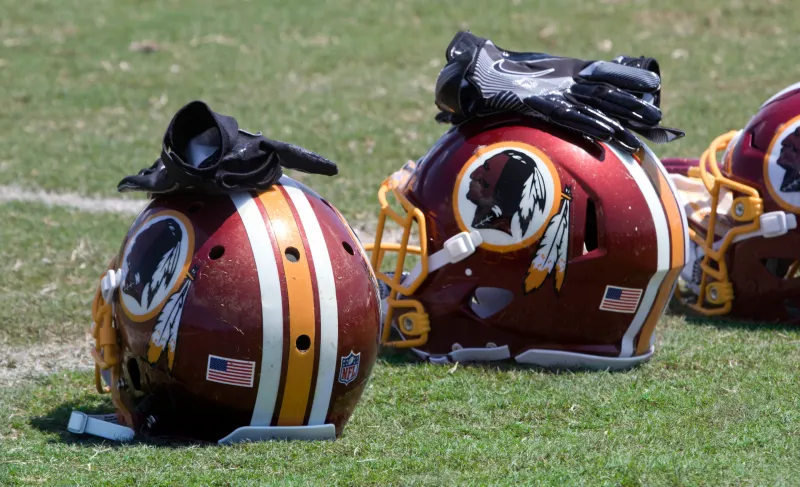On Monday, July 13, the National Football League (NFL) announced that the Washington Redskins will be changing its name due to its racist implications.
The professional football team has been rocked by backlash for its controversial name since 1971, yet team officials only decided to alter the name and mascot a few weeks ago, in the wake of racial injustice protests across the country, after facing pushback from its investors. For now, the team will go by the “Washington Football Team,” and their jerseys will reflect this name change.
Though a significant moment in football history, the NFL is not the only organization that has been found guilty of perpetrating a stereotypical and racist representation of a Native American. In fact, many schools across the United States have faced backlash — including Stanford.
Stanford’s mascot history
Before Stanford’s mascot was the Cardinal, it was an Indian. This lasted from 1930 until 1970, when the Stanford American Indian Organization (SAIO) petitioned for its removal.
According to the Native American Cultural Center, “55 Native American students and staff at Stanford presented a petition to the University Ombudsperson who, in turn, presented it to President Lyman.”
The students felt disrespected and urged the school to change the mascot as it was “stereotypical, offensive and a mockery of Indian cultures.”
University Ombudsperson Lois Amster wrote a letter to Stanford published in The Daily, stating that the mascot “brings up to visibility a painful lack of sensitivity and awareness on the part of the University.”

Previous Daily coverage also cites other Native American members of the Stanford community who supported the mascot change, saying that the mascot “presents a gross misrepresentation of the Indian.”
After the discontinuance of the stereotypical Native American mascot, there were unsuccessful campaigns to reinstate it, or to replace the big-nosed caricature with a more “noble” image of a Native American. In 1975, the Associated Students of Stanford University (ASSU) voted not to reinstate the first mascot, nor to replace it with another image.
Peer institutions and racially stereotypical mascots
Dating back to the 1960s, other schools and universities outside of Stanford have also changed their mascots to avoid reflecting Native American names or stereotypes.
Dartmouth, St. Johns, Seattle University and, most recently in 2008, Arkansas State all followed Stanford’s mascot change.
“We Native Americans at Dartmouth unequivocally declare that the ‘Indian symbol’ is a mythical creation of non-Indian culture and in no manner reflects the basic philosophies of Native American peoples,” Dartmouth students wrote in a letter to the University in an effort to change their former mascot. “It is said that these “Indian” symbols represent ‘pride’ and ‘respect,’ yet pride and respect do not lie in caricatures of people, but in self-awareness of fallibility.”
The Arkansas State Red Wolves used to be known as the “Indians” until 2008. Similarly, Indiana University of Pennsylvania Crimson Hawks was known as the “Indians” until 2007.
While many schools have chosen to switch, some still bear mascots depicting Native Americans or related terminology.
On MascotDB, a database for team names, clicking the “Native American mascots” tab on the website results in a list that includes at least 75 Native American or Indigenous nicknames. For the name “Indians” alone, numerous schools in a range of states are listed as using the mascot, or as having used the mascot in the past.
Despite these large numbers, some states — including California, Maine, Connecticut and Oregon — have banned the usage of certain names or terms in their schools.
The impact of these mascots and names
In Baxter Holmes’ 2014 Esquire article, titled “A ‘R*dskin’ Is the Scalped Head of a Native American, Sold, Like a Pelt, for Cash,” she writes that the term ‘r*dskins’ “represents a trophy of war — the bloody scalp of a murdered Native American, slaughtered for money, the amount dependent on whether it was a man, woman or child.”
Following the announcement of the name change, Vincent Schilling, a Native American journalist, tweeted the lyrics to the Washington Football Team’s 1972 team chant. It depicts violent actions against Native Americans, which brings to light the racist history behind the team’s former name, and another explanation as to why it is offensive.
Academic studies have also been conducted analyzing the impact of names such as the R-word. Stephanie Fryberg, Hazel Markus, Daphna Oyserman and Joseph Stone conducted four studies on the psychological effects of Native American mascots.
They found that “American Indian mascot representations are not always regarded as negative. However, the guiding question is whether these positive associations also have positive psychological consequences for American Indian students.”
In their follow-up studies, they determined that “salient social representations of American Indians undermine positive feelings of worth, whether the focus is the individual self or the communal self.”
Their research “suggests that American Indian images, such as American Indian mascots and other fictionalized, idealized, and non-contemporary representations may be associated with low self and in-group ratings because they do not provide guidelines or images for how to realize positive and contemporary selves.”
The National Congress of American Indians (NCAI) corroborated the results of these studies, noting that “American Indians are more likely than people of other races to experience violence at the hands of someone of a different race.”
But, there is still a debate …
Despite these changes, not everyone agrees.
Currently, close to 6,000 people have signed an online petition arguing for the preservation of the former name of Washington’s football team. It argues that “the iconic Washington Redskins’ image of Blackfoot Chief Two Guns White Calf symbolizes everything that Native Americans cherish about the warrior spirit that lives on in names of celebrated American sports teams.”
A poll by the Morning Consult shows that 49% of adults surveyed think that the name should be kept, with millennials trailing at 47%. On the other hand, a graphic indicates that younger generations and people of color are more likely to agree with changing the name.
The debate over the mascot change has also inspired some people to reexamine the team’s red and yellow colors.
An article by NBC Sports weighed the risks and potential outcome of changing the team colors: “If Dan Snyder and the other decision-makers go away from colors, the diehard section of supporters that is already having a hard enough time dealing with the prospect of losing the Redskins may just give up entirely.”
On the contrary, others say that the colors should be changed because “the Capitals, Nationals, Mystics and Wizards all rock red, white and blue. That’s a scheme that makes sense for Washington squads, and it’s a scheme that could be worth donning for the Redskins under their next moniker.”
The Washington Football Team will use the temporary name for the 2020 football season, delaying the selection of a new name and mascot. The team hopes to finish retiring the Redskins branding by the team’s home opener against the Philadelphia Eagles on Sept. 13.
According to an article by USA Today, “Dan Snyder and Coach (Ron) Rivera are working closely to develop a new name and design approach that will enhance the standing of our proud, tradition rich franchise and inspire our sponsors, fans and community for the next 100 years.”
Contact Elizabeth Wilson at elwilson ‘at’ s.sfusd.edu
